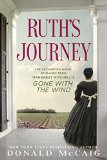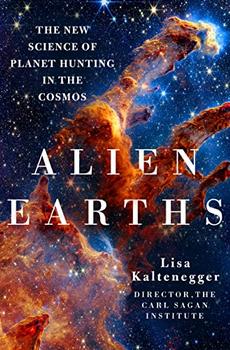Write your own review!
Cheryl M. (Marco Island, FL)
The Intrigue of the 'back story'
Back stories fascinate me! The classic novel, Gone with the Wind, had several interesting characters that need a back story. When I pick up a novel to read, I often ask myself, "Who were these people before they showed up in this novel? Where did they come from? Why are they the way they are?"
Mr. McCaig's depiction of 'Mammy' was especially well done in these respects. The foreshadowing of events and characters from Gone with the Wind were subtly interwoven in this story of Mammy (Ruth). I had to force myself not to jump to the end of the book to see how far McCaig took Mammy's journey.
 Becky H
Ruth's Journey, The Story of Mammy and Solange
Becky H
Ruth's Journey, The Story of Mammy and Solange
Though the book is related by Ruth (Mammy), the story is really Solange and Miss Ellen’s story. You might ask “Who is Solange?” Solange is Scarlett’s grandmother, but you won’t find her in Gone with the Wind.
Solange is a French heiress who is married off to a second son with prospects in sugar. She arrives in Haiti to find the sugar plantation in disarray and the second son a poor manager. Ruth is an orphan that Solange appropriates for herself. When the Haitian slave revolt becomes a dangerous reality, Solange, her husband and Ruth decamp to Charleston, South Carolina.
Here Ruth finds love and marriage in Jehu, a free black. Unfortunately Jehu finds Pastor Vesey and his church of slaves. When Vesey’s plot to overthrow and murder white slave holders is discovered, Ruth’s family is shattered and the story changes location to Savannah. Here Solange marries for a third time and gives birth to Ellen, Scarlett’s mother.
The last quarter of the book covers Miss Ellen and Gerald O”Hara’s marriage and life at Tara. The book ends with the outbreak of the Civil War.
The book is well written and follows a pre-ordained curve to introduce us to Scarlett and give us a back story for why Scarlett is who she is. Actual events and people give a feeling of reality to the novel that is a bit too long. Too much of the book deals with Solange and her amorous adventures. If you are looking for a novel of pre-Civil War manners, you will be happy. If you really want to know Ruth and a slave’s life, this is not the book for you.
4 of 5 stars
Virginia M. (San Antonio, TX)
The Journey of Solange (and Ruth)
As I began reading this book, I had the impression that the book would be the story of Ruth who was known to the world as Mammy in the fantastic novel and movie "Gone with the Wind". If I had not been anticipating this, maybe the first 2/3 of the book would have been more satisfying. Thinking about it later, I wondered if possibly the author had begun a novel but had laid it aside for some reason; then when authorized by the Mitchell estate to write a novel about Mammy he remembered that old unfinished novel and decided that its young black girl could be turned into Mammy. So he finished the earlier work by throwing in familiar names from GWTW that we all knew and loved at the end. I say that because most of the book is not about Ruth/Mammy. The book is about the French woman who turns into Scarlett's grandmother – detailing this woman's thoughts and her life experiences. I could even theorize that it is because of the need to shift the premise of the book from that earlier unfinished novel to Mammy's story that the last 1/3 is suddenly told in first person from Mammy's point of view.
In that last portion of the book, Mammy suddenly becomes a child of the south picking up the dialect of those African children who were born and raised by slave parents on a plantation in association with other slaves. This seems out of place for the child who at the approximate age of 4 is found and raised somewhat as half-daughter and half- aide -de-camp in the household of an educated French woman. I question where this dialect came from when she apparently had little association with other black servants or slaves until she was a grown woman.
When the book finally takes us to Tara and we once more find our familiar characters from GWTW, I found some of earlier life of these characters to be surprising and quite creative. Many were described far differently than I would have unexpected. It sort of makes me want to go back and read GWTW again and see how these new persona fit in.
Even if I had not felt rather cheated because the book did not meet my expectations about its point of view, I would have had a few other complaints. These include:
I had to keep a dictionary close by in order to make sure I was understanding some paragraphs of the book. I almost felt as if the author was trying to impress me with his wide vocabulary.
I did not like the untranslated French phrases in the early parts of the book. Luckily, when the story changed to truly be about Ruth and be told from her point of view, the use of those annoying phrases pretty much ceased.
I felt as if the author abruptly threw in a thought before he prepared his readers for that thought. For instance, Solange (Ruth's owner) is described as being disturbed about the content of a letter from her father before the readers are made aware that she has received a letter.
In order to end on a positive note, let me add that I found out after I completed the book that Denmark Vesey was a real person. That made me curious to now go back and read the portion of the book where he was active in the life of Ruth. Historical fiction is my favorite type of book and the civil war era especially appeals to me but somehow in all that reading I had not met up with Denmark Vesey until now. I liked that the author wove this historical information into his novel.
I received this book for free from the publisher as a Book Browse First Impression in exchange for a review. This did not influence my opinion.
Cheryl K. (East Aurora, NY)
Not Mitchell's Mammy
Having read Gone With the Wind three times, and enjoying most novels related to the Civil War South, I was very anxious to read Ruth's Journey. Unfortunately, I had difficulty following the dialog and the character development was incomplete and extremely frustrating. Mammy was such a
beloved part of GWTW but I never really felt connected to her in this novel.
I would not recommend this book for a book club discussion, as it is extremely difficult to follow.
Mammy (Ruth) was almost a secondary character, but would have had a wonderful story to tell if told more fluidly.
Loretta F. (Fountain Inn, SC)
An Unremarkable Journey
Since I enjoy reading about the Old South, I chose this book to read and review. I found the first part of the story, set on the island of Saint Dominque (Haiti), difficult to follow. The writing seemed choppy and the dialogue uneven. It's hard to imagine people talking like that even a long time ago.
When the story shifts to Savannah and Charleston, the writing becomes somewhat clearer, but the dialogue still does not always ring true. On the one hand, I think the author described the turmoil caused by the Denmark Vesey uprising quite well. And I appreciated the humorous way that Ruth viewed the white folks and their doings. But, on the other hand, one important event involving Jack Ravenel's horse and his wife and daughter was just too hard to believe. And most disappointing of all: Ruth's character never quite succeeded in becoming "Mammy" from GWTW for me.
Minnesota book lover
not the character we knew and loved from GWTW
As a long-time lover of Gone With the Wind, I always look forward to books that relate to it, and I liked McCaig's take on the backstory of Rhett Butler, but this one falls short. It is odd in several respects: the main character doesn't figure into much of the story until about a third of the way through; the dialogue is choppy and it seems no one can finish a sentence or thought; it switches from third-person to first-person about two-thirds of the way through. I assume the errors in names (Beatrice Tarleton has a husband alternately called Jim and Hugh, and her daughter is sometimes Hetty and sometimes Betty) will be corrected before final publication. But the fundamental flaw is that the character doesn't comport with the Mammy of GWTW. There are similarities, but this one just doesn't have the sass and verve of the original, and in this book just isn't as interesting a character. An interesting read, but not a good addition to the GWTW story.
Wendy
But would Margaret Mitchell approve?
On the cover of "Ruth's Journey" it proudly states that it was authorized by the Margaret Mitchell estate. They should be ashamed of themselves. This is clearly a commercial ploy. Like others, I was excited to receive this book. Mammy is one of the most iconic characters in literature and film. Ruth (aka Mammy) doesn't even become central to the story for over 100 pages. The device of using what can only be considered "vernacular" speech patterns is confusing and borderline offensive. And the other characters you know and love don't appear until more than halfway through the book. If you are looking for the beloved story of "Gone With the Wind" from Mammy's perspective, you won't find it here.
Elizabeth L. (Beavercreek, OH)
Where was Ruth?
This book was billed as the story of Mammy (Ruth) from GWTW. Unfortunately, the author seems to have forgotten to take Ruth along on the trip! The first third to a half of the book only mentions Ruth in the most peripheral way and I felt that I didn't get to know the character at all. By the time it switched to first person and you actually learned something about Ruth I was bored with the whole endeavor and just skimmed the rest. I never felt engaged with the characters or the story because the stated purpose of the book - telling Ruth's story was not fulfilled.







